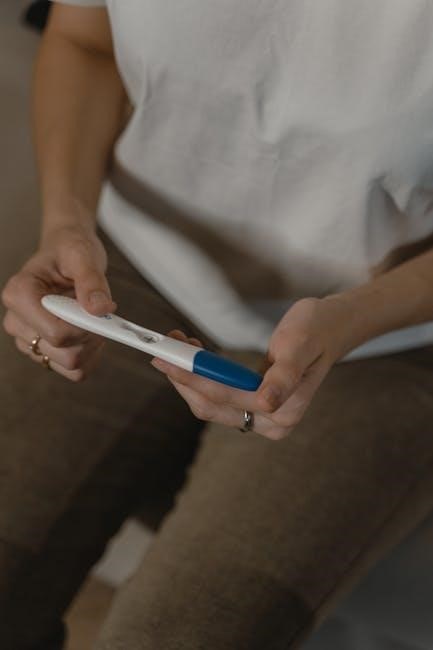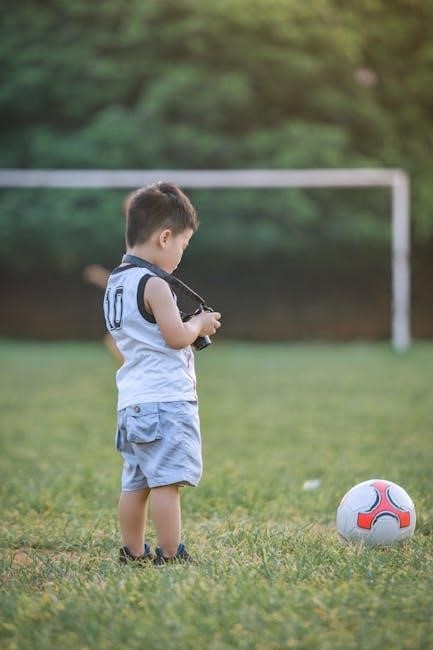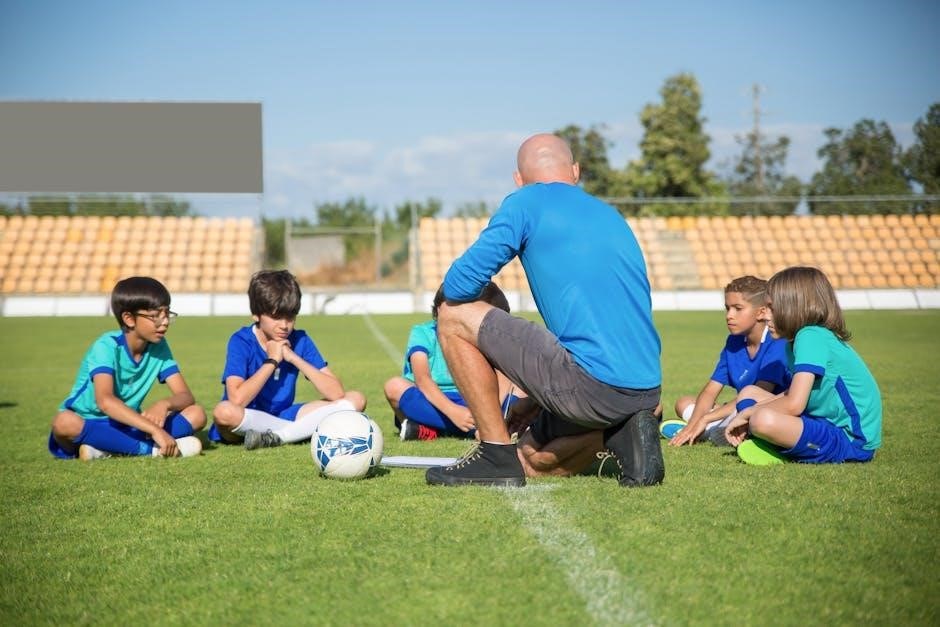Finding the right size for a junior football shirt can be tricky. This guide will help you navigate the often-confusing world of youth sportswear sizing. By understanding the nuances of different brands and age ranges, you will be able to ensure a perfect fit for comfort and performance.
Navigating the world of junior football shirt sizing can feel like a complex game. Unlike adult sizes, children’s clothing sizes are often based on age ranges, which don’t always accurately reflect a child’s individual build. This introduction aims to demystify the process, providing parents and coaches with essential knowledge to make informed decisions.
Understanding the basics of junior sizing is crucial for ensuring comfort, performance, and even safety on the field. A shirt that’s too tight can restrict movement, while one that’s too loose can be a tripping hazard. Moreover, a well-fitting shirt boosts confidence and allows young players to focus on the game, not their clothing.
This guide will delve into the key factors influencing junior football shirt sizes. We will explore the common sizing methods used by major sportswear brands like Nike, Adidas, and Puma. You’ll learn about age-based sizing charts, height and weight guidelines, and the importance of taking accurate measurements. We will also discuss the impact of growth spurts and provide practical tips for selecting the right size, ensuring your young athlete is always game-ready.

Importance of Accurate Sizing
Accurate sizing of junior football shirts goes beyond mere aesthetics; it’s paramount for a young player’s comfort, performance, and overall well-being. A properly fitted shirt allows for unrestricted movement on the field, enabling players to execute passes, tackles, and sprints without feeling constrained. Conversely, an ill-fitting shirt can hinder agility and coordination, potentially impacting their game.
A shirt that is too tight can cause discomfort, chafing, and even restrict breathing, especially during intense physical activity. On the other hand, an excessively large shirt can be cumbersome, leading to tripping hazards and impeding a player’s ability to control the ball effectively. Imagine a young player constantly adjusting their oversized shirt instead of focusing on the game – accurate sizing eliminates this distraction.
Beyond performance, correct sizing contributes to a player’s confidence and self-esteem. When children feel comfortable and look good in their sports attire, they are more likely to participate actively and enjoy the game. Moreover, properly sized gear helps prevent injuries caused by ill-fitting clothing. Therefore, taking the time to ensure accurate sizing is an investment in a young player’s sporting journey.
Age-Based Sizing Charts
Age-based sizing charts are a common starting point when selecting junior football shirts. These charts provide a general guideline linking a child’s age to a corresponding shirt size. However, it’s crucial to understand that these charts are based on average measurements and may not accurately reflect every child’s unique body proportions.
Typically, age-based charts will list age ranges, such as 7-8 years, 9-10 years, and so on, alongside a suggested shirt size (e.g., Small, Medium, Large). These sizes often correspond to numerical values or letter codes that vary across different brands. For instance, a Nike “Medium” for ages 10-12 may differ from an Adidas “Medium” for the same age group. It’s also important to note that some charts include height ranges alongside age, offering a slightly more refined estimate.
While age-based charts can be useful for initial selection, relying solely on them can lead to inaccurate sizing. Children of the same age can have significantly different heights, weights, and chest measurements. Therefore, it’s always recommended to supplement age-based information with actual measurements to ensure a more precise fit. Treat age-based charts as a preliminary guide rather than a definitive solution in finding the right shirt size.
Height and Weight Guidelines
Height and weight guidelines provide a more personalized approach to junior football shirt sizing compared to age-based charts. These guidelines acknowledge that children of the same age can vary significantly in size and body composition. By considering both height and weight, you can obtain a more accurate estimate of the appropriate shirt size.
Typically, height and weight guidelines are presented in a chart format, with height ranges listed along one axis and weight ranges along the other. The intersection of these ranges indicates the recommended shirt size. For example, a child who is 53-55 inches tall and weighs between 60-70 pounds might fall into a “Medium” size category. However, it’s essential to recognize that even these guidelines are averages and may not account for individual body shapes.
It is important to measure the child’s height and weight accurately before consulting these guidelines. Ensure the child stands straight against a wall for height measurement and uses a reliable scale for weight measurement. While height and weight guidelines offer a refined estimate, they are still not a substitute for precise measurements like chest and waist circumference. Always consider these guidelines as a supplementary tool rather than a final determinant when choosing a junior football shirt size.
Chest Measurement Instructions
Accurate chest measurement is crucial for selecting the right junior football shirt size. The chest measurement provides a precise indication of the shirt’s fit across the broadest part of the torso, ensuring comfort and freedom of movement on the field. To obtain an accurate chest measurement, follow these detailed instructions.
First, ensure the child is wearing a light shirt or no shirt at all. This prevents bulky clothing from distorting the measurement. Have the child stand upright with their arms relaxed at their sides. Using a flexible measuring tape, wrap it around the chest, placing it under the armpits and across the broadest part of the chest. The tape should be snug but not too tight, allowing for comfortable breathing.
Ensure the measuring tape is horizontal around the entire chest. It’s helpful to have another person assist with this to ensure accuracy. Take the measurement at the point where the tape meets, making sure the tape is not twisted or kinked. Record the measurement in inches or centimeters, depending on the size chart you’re using. Compare this measurement to the manufacturer’s size chart to determine the appropriate shirt size. If the measurement falls between two sizes, it’s generally recommended to choose the larger size to allow for growth and comfortable movement during play. Always double-check the measurement to avoid errors and ensure the best possible fit.
Waist Measurement Instructions
Taking an accurate waist measurement is essential for ensuring a comfortable and well-fitting junior football shirt. While chest measurements are primary, the waist measurement can help determine overall fit, especially for shirts with a more tailored or fitted design. Follow these instructions carefully to obtain the most accurate waist measurement possible.
Begin by having the child stand in a relaxed position with their feet shoulder-width apart. Ensure they are wearing light clothing or no shirt to avoid adding extra bulk to the measurement. Locate the natural waistline, which is usually the narrowest part of the torso, typically above the belly button but below the rib cage. It can be helpful to have the child bend to the side to identify this point.
Wrap a flexible measuring tape around the natural waistline, keeping the tape parallel to the floor. The tape should be snug but not too tight, allowing for a comfortable fit. Ensure that the tape is not digging into the skin or creating any indentations. Take the measurement at the point where the tape meets, ensuring the tape is level and not twisted. Record the measurement in inches or centimeters, depending on the sizing chart provided by the shirt manufacturer.
Compare the waist measurement to the size chart to determine the appropriate shirt size. If the measurement falls between two sizes, consider the child’s body type and the desired fit. If they prefer a looser fit or are between sizes, it’s generally best to choose the larger size. Double-check the measurement to ensure accuracy. This measurement provides a comprehensive understanding of the shirt’s fit, enhancing overall comfort and performance.
Brand-Specific Size Variations
One of the most crucial aspects of selecting the right junior football shirt size is understanding that sizing can vary significantly between different brands. What may be considered a “Medium” in one brand could be a “Small” or even a “Large” in another. Ignoring these variations can lead to frustration and ill-fitting shirts. Therefore, it’s essential to consult each brand’s specific size chart before making a purchase.
Major sportswear brands like Nike, Adidas, Puma, and Under Armour often have their own unique sizing conventions. These variations can stem from differences in design, target markets, and manufacturing processes. Some brands may cater to a more athletic, streamlined fit, while others may offer a more relaxed and comfortable fit. Regional differences can also play a role, with European brands sometimes having different sizing standards compared to American brands.
Furthermore, even within the same brand, sizing can vary depending on the specific product line or collection. For example, a “training” shirt might have a different fit than a “match” shirt. Limited edition or retro-inspired shirts might also deviate from standard sizing due to their unique designs. Always look for size charts specific to the shirt you intend to purchase.
To navigate these brand-specific size variations effectively, always refer to the official size chart provided on the brand’s website or the retailer’s product page. Pay close attention to the measurements provided, such as chest, waist, and length, and compare them to the child’s actual measurements. Reading customer reviews can also provide valuable insights into whether a particular shirt tends to run small, large, or true to size.
Taking Measurements at Home
Accurately taking your child’s measurements at home is a crucial step in ensuring you select the correct junior football shirt size. This process is straightforward and requires only a few simple tools: a flexible measuring tape, a pen, and a piece of paper to record the measurements. It is best to take measurements while your child is wearing light clothing to ensure accuracy.
Begin by measuring the chest circumference. Have your child stand with their arms relaxed at their sides. Wrap the measuring tape around the fullest part of their chest, ensuring that the tape is horizontal and snug but not too tight. Record this measurement in inches or centimeters, depending on the size chart you will be using.
Next, measure the waist circumference. Locate the natural waistline, which is typically the narrowest part of the torso. Wrap the measuring tape around the waist, keeping it horizontal and snug. Again, record the measurement accurately.
You can also measure your child’s height. Have them stand straight against a wall, and use a measuring tape or ruler to measure from the top of their head to the floor. Ensure they are not wearing shoes during this measurement.
When taking measurements, it’s essential to maintain good posture. Slouching or bending can distort the measurements and lead to inaccurate results. Double-check all measurements to minimize errors. If possible, have someone assist you in taking the measurements to ensure the measuring tape remains in the correct position.
Once you have all the necessary measurements, compare them to the brand-specific size chart for the shirt you are interested in purchasing. If your child’s measurements fall between sizes, it is generally recommended to choose the larger size to allow for growth and comfort.
Dealing with Mid-Season Growth Spurts
Mid-season growth spurts are a common challenge for parents of young athletes, particularly in sports like football where properly fitting uniforms are essential. These sudden growth spurts can quickly render a perfectly sized junior football shirt too small, impacting comfort and performance on the field. To effectively manage these growth spurts, consider a few proactive strategies.
Firstly, when initially purchasing the shirt, consider buying slightly larger than needed. While it’s important the shirt isn’t excessively baggy, allowing a little extra room can accommodate some growth. Opting for shirts with adjustable features, such as elasticated waistbands or adjustable cuffs, can also provide a more adaptable fit as your child grows.

Regularly monitor your child’s measurements throughout the season. A quick check of chest, waist, and height every few weeks can help you identify when a growth spurt is occurring. This allows you to anticipate the need for a larger size before the existing shirt becomes too restrictive.
Consider purchasing affordable, temporary options if a significant growth spurt occurs mid-season. This could involve buying a basic, less expensive shirt in a larger size to bridge the gap until the end of the season. Alternatively, explore options for exchanging or selling gently used shirts that no longer fit.
Layering can also provide a temporary solution. Wearing a thin, moisture-wicking base layer under the shirt can improve comfort if the shirt is becoming slightly snug. However, ensure the layering doesn’t restrict movement.
When purchasing a new shirt due to a growth spurt, refer to the brand’s size chart and take accurate measurements. Remember that sizing can vary between brands, so relying on previous sizes may not be accurate.
Tips for Choosing the Right Size
Selecting the correct size junior football shirt is crucial for a young athlete’s comfort and performance. A shirt that fits well allows for unrestricted movement, boosting confidence and preventing distractions during play. Here are some essential tips to guide you through the sizing process.
Always begin by consulting the brand’s specific size chart. Sizing varies significantly between manufacturers, so relying on general age-based guidelines can be misleading. Locate the size chart, usually available on the brand’s website or product page, and take accurate measurements of your child’s chest, waist, and height.
When measuring, use a flexible measuring tape and ensure your child is standing straight with their arms relaxed at their sides. Measure the chest at its fullest point, the waist at its natural waistline, and the height from head to toe.
Consider the shirt’s intended fit. Some players prefer a looser fit for greater freedom of movement, while others prefer a more snug, athletic fit. If your child prefers a looser fit, consider sizing up slightly, but ensure the shirt isn’t excessively large.
Read customer reviews. Other parents often share valuable insights regarding sizing accuracy. Pay attention to comments about whether the shirts run small, large, or true to size.
If possible, try the shirt on before purchasing. This is the most reliable way to ensure a perfect fit. If you’re buying online, check the retailer’s return policy to ensure you can easily exchange the shirt if it doesn’t fit.

Remember to account for potential growth spurts, but avoid sizing up excessively. A slightly larger shirt is preferable to one that restricts movement, but a shirt that is too big can also be cumbersome.
Where to Find Size Charts
Locating accurate size charts is paramount when purchasing junior football shirts. These charts provide crucial measurements that ensure a proper fit, maximizing comfort and performance on the field. Fortunately, size charts are readily available through several channels.
The most reliable source is typically the manufacturer’s official website. Brands like Nike, Adidas, Puma, and others usually have dedicated size guides accessible from their homepage or specific product pages. These charts are regularly updated and tailored to their specific product lines.

Many online retailers also provide size charts. Websites like Amazon, sports equipment retailers, and department stores often include size information on the product page, either as an image, a downloadable PDF, or an interactive tool. Be sure to verify that the chart is specific to the brand and product you’re considering.
Physical stores often have size charts displayed near the clothing section or available upon request from store associates. This allows you to compare measurements in person and get expert advice.
Social media platforms and online forums dedicated to football or sportswear can be valuable resources. Other parents and players often share sizing tips and links to helpful charts.
Consider using size comparison websites or apps, which compile size information from multiple brands. However, always double-check the information against the official manufacturer’s chart for accuracy.
When in doubt, contact the seller directly. Whether you’re purchasing online or in-store, customer service representatives can provide specific sizing guidance and help you locate the appropriate chart.
